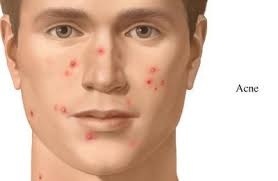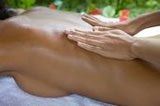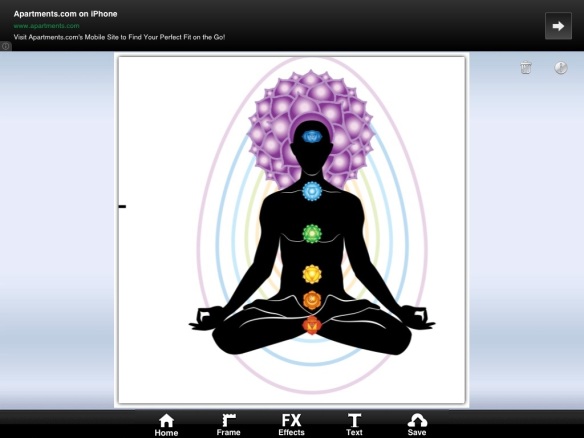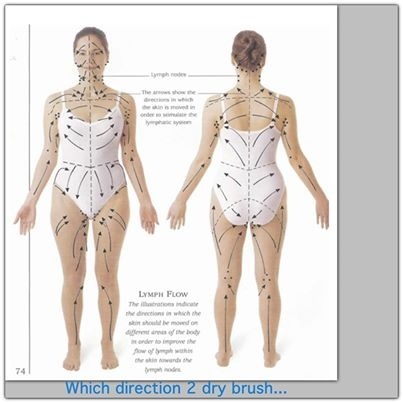A daily system of antibacterial and exfoliating products is needed to treat acne. True control means no physical sign of the disease shows in its active stage. Since acne is a treatable condition with no cure, most adult acne sufferers will be tied to a basic acne-fighting regimen for life, along with several necessary lifestyle changes. It’s “skin care suicide” to abruptly abandon home treatment once acne completely clears. Retention hyperkeratosis (the process of dead skin cells building up and sticking together in the pore) is an ongoing, chronic condition that runs in families. If the acne-prone person doesn’t adhere to a daily system to interfere with retention hyperkeratosis, and make permanent lifestyle changes (less stress, enough sleep, reduced iodides in the diet, avoiding pore-clogging products, etc.), the visible signs of acne will begin to reappear almost immediately.
Clinical Acne Treatments
Professional skin peels and clinical facials provide these corrective and preventative benefits:
They exfoliate dead skin cells.
They gradually help fade dark spots left by residual acne and razor bumps.
They help fade dark patches and even out the skin tone.
They lighten “beard shadowing” caused by razor bumps, ingrown hair and shaving powders.
They help exfoliate dead skin build-up that buries ingrown hairs.
They help soften and reduce the thickness of scar tissue.
They help dissolve and control excess oil.
They reduce flakiness and tightness.
They make extraction of pimples and blackheads easier.
They help smooth rough-textured skin.
They help evacuate clogged pores.
They help deliver active ingredients deeper for enhanced results.
They help reduce the depth of fine lines and wrinkles.
Antibiotics
To individuals reluctant to abandon their “old school” tetracycline, minocycline and erythromycin, consider this: “If tetracycline can arrest venereal disease within ten days, why are you still breaking out after all these years?” Or: “If erythromycin can cure an ear infection just a few days, why do you still have active acne?”
The medical definition of acne reads something like this: Acne is a genetic disease evolving from retention hyperkeratosis of the follicular epithelium. So, if we are dealing with a disorder of the follicle (pore), why flood the body with antibiotics in the hopes that some of it ends up in the pores? Then, consider the side effects, which include severe sun sensitivity (leading to severe skin discoloration), dehydration, thinning hair, birth defects, yeast infections and digestive disorders to name a few. Topical antibiotics like clindamycin, erythromycin and tetracycline can control bacteria in open surface lesions only, but they don’t penetrate deep enough into the pores to kill bacteria where acne starts, and they can’t interfere with the process that actually causes acne.
Benzoyl Peroxide
Benzoyl peroxide (BPO), used for decades, is possibly the most effective acne medication available. Available over-the-counter, by prescription and from clinical estheticians, BPO penetrates deep into the pore, releases oxygen and kills p. acnes, a bacteria that lives without oxygen below the skin’s surface. It also causes a desirable “peeling effect” deep in the follicle, similar to retinoids and alpha hydroxy acids, which loosen and soften acne impactions. With regular use, BPO kills bacteria and exfoliates dead cell build-up deep in the follicles. This action below the skin line halts p. acnes overgrowth and prevents new impactions from forming.
The good news is many BPO formulations are unsurpassed in their ability to control all grades of acne. Unlike Accutane®, oral antibiotics and retinoids, BPO is safe for pregnant women. The bad news is BPO products are not all “created equal”. First, we must examine the base with which the BPO is formulated. Is the BPO mixed with oil, fatty acids, glycerin, sulfur and/or water? Your BPO might be 10%, but its oily or fatty-acid base may seal off the skin, preventing adequate penetration of the BPO itself. Some BPO products are glutted with pore-clogging ingredients. The shelf life of over-the-counter BPO may not be monitored closely and older BPO products can lose their potency.
Any BPO product that can be tolerated overnight the first week or two is not going to be strong enough to control acne in the long run. The skin rapidly gets used BPO, and it stops working. That being said, any BPO product that’s strong enough to clear acne, and keep it that way, is definitely too strong to be tolerated overnight for the first 2-3 weeks of treatment.
Side effects from incorrect use or overuse can include redness and peeling, which is why some people abandon their treatment. BPO should be introduced gradually to allow the skin to become accommodated to it and to keep side effects to a minimum. BPO should not be worn in sunlight or if one expects to perspire for any reason. BPO also migrates through sunscreens, moisturizers, lips balms, eye creams and petroleum jelly and can end up in areas where it wasn’t applied. This may cause causing dryness, irritation, peeling and temporary darkening in those areas. For the same reason, BPO cleansers should not be rinsed over the eyes or onto the neck.
Retinoids
Retinoids are a class of chemical compounds related to vitamin A, used to treat acne and sun-damage. Topicals include tretinoin (Retin-A®, Avita® and Renova®), adapalene (Differin®), tazarotene (Tazorac®), retinol and retinyl propionate, most of which are available in gel, serum and cream formulations.
Retinoid gels and serums are helpful in the treatment of non-inflamed blackheads, closed comedones (whiteheads), clogged pores and rough texture, if one isn’t sun-sensitive or exposed to long periods of direct sun. The emollient cream versions are often loaded with pore-clogging ingredients and can be acne aggravators. They’re more suitable for photo-damaged skin that isn’t acne prone. The problem with retinoids is this: While they facilitate a desirable peeling effect deep in the follicle and help loosen and dislodge comedones, they don’t kill p. acnes bacteria. Side effects can include thinning of the skin, redness, prolonged peeling, irritation and sun sensitivity that can lead to severe darkening. Retinoid gels and serums, alternated with or layered under benzoyl peroxide at night, can be excellent “skin texturizers” that can help clear acne, refine the pores and rejuvenate and brighten the skin. When using retinoids, it’s very important to apply them only at night, to avoid direct sun and to protect the skin with a non-comedogenic physical sunblock during the day.
Alpha Hydroxy Acids
Alpha hydroxy acids (AHA) are often used to treat acne and include glycolic acid (from sugar cane), mandelic acid (from bitter almonds) and lactic acid (from sour dairy and other foods). They penetrate the follicle and, when introduced gradually and used as directed, can have fewer adverse side effects than retinoids, i.e. excessive flaking, redness, dark blotches, irritation and sun sensitivity. They help reduce dead cell build-up in the pore, fade dark spots and soften scar tissue, have a lower price tag, and are widely available without a prescription. Home care products are available in gels, serums, lotions and creams in strengths ranging from 5% to 20%. Oil-free glycolic, mandelic and lactic acid gels and serums can be formulated with salicylic acid, azelaic acid and skin brighteners, and are highly effective for treating acne and post-inflammatory blemishes and should be introduced gradually.
AHA Skin Peels
At higher concentration, glycolic, lactic and mandelic acid and AHA blends make highly effective skin peels. Peels are safe and beneficial for all skin tones and for a wide variety skin types, when performed correctly and chosen carefully according to skin sensitivity and condition, home care used, peel percentage and pH and other factors.
Mandelic Acid
Mandelic acid is one of the newer AHA ingredients used to treat mild to moderate acne. An aromatic alpha hydroxy acid derived from bitter almonds, it’s available in skin peels, acne topicals, skin brighteners, cleansers and toners. Because of its well-established antibacterial, pore-purging, anti-aging and skin brightening action, mandelic acid is ideal for adult acne, folliculitis and laser resurfacing patients. Mandelic acid is less irritating than glycolic acid when formulations contain little or no alcohol.
Salicylic Acid
Salicylic acid, also called beta hydroxy acid (BHA), is an oil-soluble anti-bacterial ingredient that is plant-derived and indirectly related to aspirin. It causes epidermal cells to shed more readily, opens clogged pores, helps dissolve sebum, neutralizes bacteria and is most often used in acne products and dandruff shampoos. When formulated with glycolic and lactic acid, it penetrates better to increase cell turnover and prevent pores from clogging up again. Gel formulations can be worn under benzoyl peroxide at night. Salicylic acid products rarely clear acne completely when used alone and can be irritating. Beta hydroxy skin peels, though quite uncomfortable when applied, help remove blackheads and whiteheads, diminish fine lines, improve active acne and brighten the skin tone.
Azelaic Acid
Azelaic acid, derived from wheat, rye and barley, is marketed as a stand-alone acne treatment (Azelex®) because it helps reduce inflammation and bacterial growth in the follicles. Finacea® is less potent than Azelex® and prescribed for mild to moderate rosacea to help kill bacteria, calm inflammation and diminish redness. However, azelaic acid works best as a skin lightener and acne-inhibitor when formulated with alpha hydroxy acids, salicylic acid, mandelic acid and/or kojic acid, producing a more potent synergistic effect on the skin.
Niacinamide
Niacinamide (vitamin B3) is a stable, versatile ingredient that possesses antibacterial, anti-inflammatory and pigment-reducing properties, and often found in skin brightening formulations. Used for mild acne, rosacea and hyperpigmentation, niacinamide has also been shown to help regulate sebum, improve barrier function, increase immunity, reduce sensitivity and improve the visible signs of aging without irritation. Niacinamide is safe and effective as part of a longterm maintenance program for hyperpigmentation and adult acne. It works best when used in combination with other acne and skin brightening products.
Skin Brighteners
Brightening ingredients help inhibit the over-activity of tyrosinase, the key enzyme involved in melanin synthesis and skin coloration. Tyrosinase activity is accelerated in melanin-producing cells by the stimulation of free radicals caused by sun exposure, DNA photo-damage and other skin stresses. This incites increased levels of melanogenesis, a complex chain reaction that leads to the formation of skin discoloration.
Melanin-suppressing ingredients include the controversial FDA-approved hydroquinone (HQ), kojic acid , kojic dipalmitate, alpha arbutin, azelaic acid, vitamin K, mulberry extract, bearberry (beta arbutin), licorice extract, niacinamide (vitamin B3), l-ascorbate (stable, absorbable vitamin C), emblica extract, Tego® Cosmo C250, Gigawhite™, mandelic acid and citrus juice extracts. Mandelic acid, niacinamide and azelaic acid possess both depigmenting and acne-fighting properties.
Gel and serum brightening “cocktails” formulated with retinoids or alpha hydroxy acids are able to penetrate better and carry ingredients deep to the target tissues. This makes them effective against acne while they interfere with the mechanism that leads to the over-production of melanin in the skin. Patch-tested and used exactly as directed and in the appropriate formulation, there is a low incidence of irritation and allergic reaction.
Prescription “bleach” creams compounded by pharmacists, including Kligman’s original formula and modified versions (including Tri-Luma®), are combinations of HQ, tretinoin and steroids. While effective for discoloration, they are indicated for short-term use only, and not appropriate to treat acne. Other prescribed combinations include HQ and glycolic acid (Lustra® and Glyquin®) and HQ and retinol (Alustra®), in addition to a variety of old school HQ-only formulations which perform poorly and can be comedogenic.
Sulfur
Sulfur has been used for centuries as an anti-inflammatory and drying agent. As an acne medication, sulfur is formulated with resorcinol, benzoyl peroxide or sodium sulfacetamide, and helps to dry out active acne, reduce oiliness and prevent new breakouts. Sulfur clay masks dramatically improve skin texture by exfoliating dead skin cells, and make the skin more bio-available to active acne products applied after the mask is removed. Sulfur is safe and effective to treat acne, oily skin and fungal infections, unless one is allergic to it or suffers from extremely dry skin or eczema. It works best when used in conjunction with other acne methods.
Rasul Clay
Also known as rhassoul clay and ghassoul clay, this mineral-rich clay is found in the mountains of Morocco. Lerosett® Mask by Gunilla of Sweden is a well-known brand. Free of chemicals and preservatives, rasul clay absorbs oil and follicular debris and helps dry out active acne, though it doesn’t penetrate the follicle or kill bacteria. Like sulfur, rasul clay works best when used in combination with other acne methods.
Resorcinol
Resorcinol, an antiseptic chemical exfoliator derived from resins, is usually formulated with sulfur, and dries out active acne and helps reduce oily build-up on the skin. Jessner’s solution, a chemical peel made with a combination of salicylic acid (BHA), lactic acid and resorcinol, has been used for decades to address acne, superficial scars, sun-damage and rough texture.
Combination Topicals
Several acne products are combinations of two or more active ingredients, including benzoyl peroxide-sulfur, sulfur-resorcinol, sodium sulfacetamide-sulfur (Sulfacet-R®), benzoyl peroxide-antibiotics (Benzamycin®, Duac® and BenzaClin®), clindamycin-tretinoin (Ziana®), and benzoyl peroxide-adapalene (Epiduo® Gel).
Dapsone
Dapsone gel (Aczone®) is approved for the topical treatment of acne. Dapsone is a sulfone drug used mainly as an oral medication for leprosy and less commonly as a treatment for acne. The FDA warned Allergan that their claims overstated the clinical efficacy and that they misleadingly suggested the drug was safer than has been demonstrated by substantial evidence and clinical experience. Until recently, they failed to disclose the fact that using dapsone gel followed by benzoyl peroxide can result in temporary yellow or orange skin discoloration and facial hair.
Sodium Sulfacetamide
Sodium sulfacetamide lotion belongs to a class of drugs called sulfa antibiotics, sold as Klaron® (sodium sulfacetamide) Sulfacet-R®, Novacet® (sodium sulfacetamide with sulfur) and other generic brands. For sensitive skin, seborrheic dermatitis and rosacea, it’s well-tolerated and less irritating than other topicals. It’s often prescribed in combination with other acne methods because the skin builds up a tolerance over time and it loses its effectiveness. Versions containing sulfur are mild exfoliants and some people are bothered by the strong smell. There is increased risk for systemic side effects if used on “open” acne, broken skin or on large areas of the body, and it should not be used if pregnant or nursing.
Isotretinoin
Accutane® (isotretinoin) is a powerful systemic retinoid, related to vitamin A, often used as a “last resort” to treat severe cystic acne. It works by shutting down the sebaceous activity in the entire body. Side effects can include severe birth defects, depression, suicidal thoughts and attempts, fatigue, problems regulating blood sugar, kidney malfunction, pancreatitis, liver abnormalities, fragile skin, dryness and peeling, redness of the face, skin infection, delayed wound healing, blurred vision, decreased tolerance to contact lenses, cataracts, conjunctivitis (“pink eye”), decreased night vision, chapped lips, gum inflammation and bleeding, severe sun-sensitivity, rashes, hair loss, aching joints, bone changes, osteoporosis, chest pain, headaches, nausea, vomiting, and chronic inflammatory bowel disease with rectal bleeding. Monthly blood tests for liver and kidney function and glucose levels are required
Because isotretinoin can cause severe birth defects, including mental retardation and physical malformations, a woman must not become pregnant while taking it. Women of child-bearing age must undergo monthly pregnancy testing and use two forms of foolproof birth control. All patients (male and female) are required to sign a detailed consent form outlining the many severe side effects. Since 2005, all patients who use this drug, all doctors who prescribe it, and all pharmacies who fill prescriptions must join the national FDA-mandated “iPLEDGE” Accutane Registry.
Unfortunately, many patients with lesser grades of acne are being prescribed isotretinoin very casually. Not only is it potentially dangerous, it simply doesn’t work for all types of acne. Tens of thousands of disillusioned post-Accutane® failure cases were promised permanent results and put at risk when it was clearly not even indicated for their grade of acne. Often, the acne would clear up after one or more cycles, only to have the condition return within months of stopping the drug.
Also, isotretinoin interferes with the skin enzyme collagenase, so there is increased risk of severe scarring if procedures like dermabrasion, deep chemical peels, laser resurfacing and other facial surgery are performed. Roche and other manufacturers have withdrawn this drug from the market because of lawsuits and huge financial losses. At this time, only a couple of generic versions are still available.
Spironolactone
Spironolactone is a synthetic hormone and anti-androgen diuretic drug is used to treat high blood pressure and fluid retention. Because it decreases testosterone production, it is also utilized to treat hirsutism, PCOS and hormonal acne in women. The birth control pill Yaz® also contains this drug.
This is not a popular treatment for those who are NOT diagnosed with an androgenic hormonal imbalance. Side effects include dehydration, nausea, fatigue, irregular periods, sun-sensitivity, headache and a link to cancer. Since it interrupts the masculinization of male fetuses, foolproof birth control is mandatory. When severe acne is accompanied by insulin resistance, obesity and hirsutism, and polycystic ovarian syndrome (PCOS) has been diagnosed, spironolactone is sometimes prescribed in combination with oral contraceptives and metformin, a drug used to treat adult-onset diabetes. Hormones and spironolactone are also prescribed for male-to-female gender reassignment patients as part of their transition therapy. However, acne and hirsutism can be genetic and cultural, i.e. run in certain families, and most cases are not always linked to PCOS.
Some tests have shown that topical spironolactone may be effective at 5% under an occlusive covering to address androgens (DHT) deep in the follicle (on the back). Some acne formulations are using trace amounts in their formulas (along with active OTC acne ingredients), but since it’s only effective at much higher percentages, the label would have to identify spironolactone as an active ingredient. The birth control pill Yaz®, which contains spironolactone, and the more potent oral spironolactone never received rave reviews for acne. While they may have worked for some, their side effects often outweigh the benefits.





